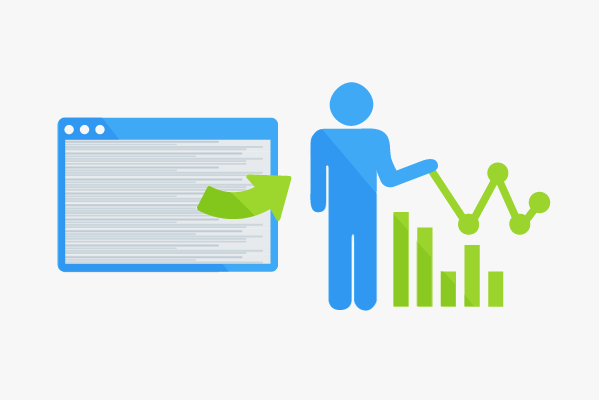Log File Analysis
A log file analysis helps web masters gather statistics and key figures about the usage of a website or web server. Log file analysis is based on log files, which log all accesses to a web server. Today, JavaScript based tracking tools such as Google analytics have in many cases replaced the traditional analysis of log files.
Evaluation of log files
A log file analysis often involves processing large amounts of data, particularly for larger websites. For small projects with few page views, log files could be read and analyzed manually. For websites that are frequently visited, special programs are required in which the log files can be entered and output according to specific requirements, especially if a long period of time should be analyzed.
Aspects of a log file analysis
A log file analysis can show the following data about the users of a website:
- IP Address and host name
- Country or region of origin
- Browser and operating system used
- Direct access by the user or reference from another website or advertising measure
- Type of search engine and search term entered
- Duration and number of pages visited by the user
- Page on which the user has left the website again
Advantages of a log file analysis
A log file analysis has the following advantages:
- Automatic logging of crawlers: Log files record every visit to the web server automatically. This also includes search engine bots. This provides valuable insights regarding bot behavior on websites.
- No JavaScript or cookies required: Unlike web analysis tools, no JavaScript codes or cookies are required for log file analysis. This makes the analysis less susceptible to technical problems. Log files can also be recorded even when users block web analytics tools.
- Realignment of historical data: web servers continuously record log files. If the files are saved again and again, they can be evaluated flexibly.
- Data regarding website usage remain within your own network: if the log file analysis is carried out internally, and is not outsourced to an external provider, the data remains in your own network.
- Measuring of aborted downloads: when logging accesses to the web server, a log file records all files that have been stored there and can be downloaded by a user. Log files use the timestamp of individual hits to log exactly how long and how much a user has downloaded. A log file analysis can therefore help determine problems with downloaded files.
- Firewalls do not interfere with the protocol: when a website is accessed from a server, the firewall does not interfere. The log file can therefore log the access exactly.
- Simple formatting: If the log file is not too large, the data can be read out and segmented with conventional data processing programs such as Excel. Therefore, no complex program solutions are required.
Disadvantages of log file analysis
The disadvantages of log file analysis:
- Caching and proxies: since a log file can only record data that is created by direct server access, all accesses that occur via the cache memory of the browser and via proxy servers are not included in the protocol.
- Regular updates necessary: To ensure that log files always deliver correct figures, the webmaster has to continuously update the software used for collecting the data. This results in additional maintenance costs.
- Additional storage requirements: The amount of data required for log files can quickly increase in case of high visitor traffic, as every access to the server is logged automatically. Regular log file analyses of large websites therefore requires additional storage resources.
- Complex data preparation for large amounts of data: for log file analysis, the individual log files must first be entered into a data preparation program. This means extra work, especially for many data sets.
- No tracking of widgets or AJAX: a log file can only store data resulting from server requests. For example, if actions within a page are carried out using AJAX, they will not be reflected in the log file, as these are not real server queries.
- Inaccurate assignment of visits: if a user uses a dynamic IP assignment when surfing and accesses a website several times, the log file shows several accesses although it was only one user at a time. This makes the traffic count inaccurate. The same applies if several users with the same IP access a website. These are then counted as one visitor only.
- Less data: A log file analysis provides less data than web analysis tools. For example, a log file analysis will not display important KPIs such as bounce rates.
Practical Use for SEO
A log file analysis is significant for SEO, as webmasters can process and analyze relevant data regarding usage of their website. SEOs do not have to transfer data to external service providers, which avoids data protection problems. However, due to the limitations of log file analysis, this should not be the only method for analyzing user behavior. it should be used as a supplement to web analysis tools such as Google Analytics. For larger websites, the analysis of log files is also associated with the processing of very large amounts of data, which in the long term requires a powerful IT infrastructure.

